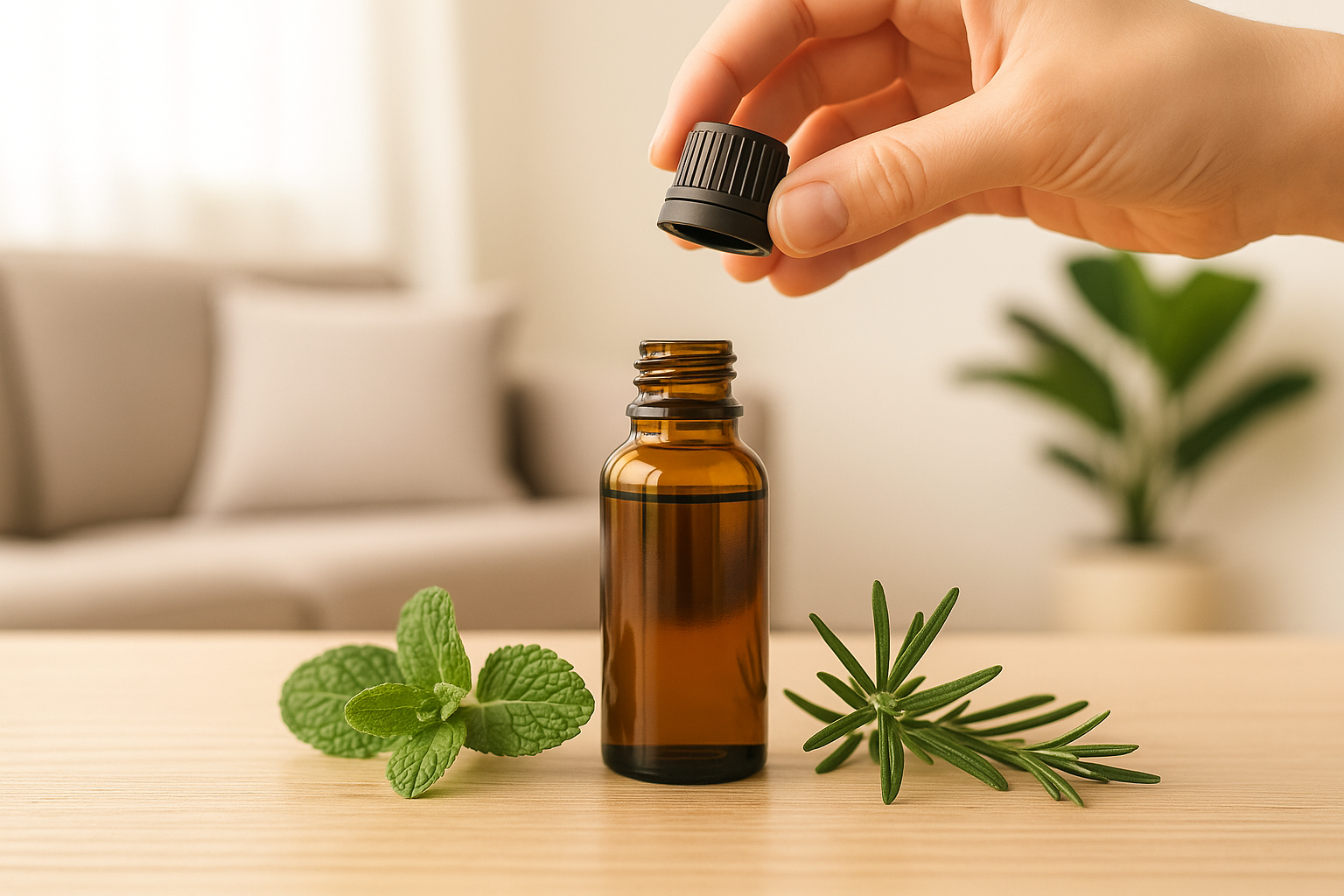Fragrance is not just aroma. It is memory, ritual, and identity. Every culture has connected scent with meaning:
incense in temples, herbs in doorways, oils in baths, smoke in ceremonies. Homes carry these traditions, often in simple acts that seem ordinary but are rich with cultural depth.
In the Pampas of Southern Brazil, Gaúcho families shaped identity through herbs.
Marcela was gathered at Easter, rosemary placed at thresholds, boldinho brewed after meals, guaco steamed for colds, carqueja dried for balance, sage burned for cleansing.
These scents did not only serve practical needs; they carried values, emotions, and cultural codes.
Understanding the cultural meaning of fragrance helps us see that home aromas are not decoration. They are history and continuity.
They link generations, strengthen belonging, and create emotional anchors.
This article explores how fragrance shapes culture, how Gaúcho herbs embody identity, and how we can honor these traditions in modern life.
Fragrance as cultural memory
Smell is the sense most closely tied to memory. A single aroma can recall childhood kitchens, celebrations, or losses.
In Gaúcho culture, marcela recalls Easter dawns, when families collected the flower in silence. Rosemary recalls kitchens filled with bread and soup. Sage recalls smoke drifting through doorways after gatherings.
These memories are not personal only. They are collective. When multiple generations associate the same aroma with the same rituals, it becomes cultural memory.
Every time we light sage or spray marcela, we activate not just our own past but also the memory of our community.
Fragrance as ritual language
Rituals speak through symbols. Fire means transformation, water means purification, and fragrance means presence.
Cultures worldwide used herbs to mark beginnings and endings. Weddings, funerals, harvests, and prayers all carried scent.
For Gaúchos, rosemary sprigs blessed doors and tools. Marcela teas marked transitions from illness to health.
Guaco’s steam meant care in times of weakness. Carqueja sachets signaled protection against imbalance. Sage smoke symbolized closure and cleansing.
Through fragrance, people communicated with forces beyond words—ancestors, nature, God, or community. It became a language of belonging.
The symbolism of Gaúcho herbs
Marcela
Symbol of calm and renewal. Collected on Easter, it represented hope, blessing, and the cycle of life. In homes, it continues to mean peace and continuity.
Rosemary
Symbol of clarity and strength. Placed at thresholds, it meant protection and good memory. It carried energy of endurance.
Boldinho
Symbol of freshness and cleansing. Used after meals, it meant balance and relief. Its smell connects with simplicity and care.
Guaco
Symbol of comfort and breath. Steamed or infused for colds, it meant family care during vulnerability. Its fragrance means compassion.
Carqueja
Symbol of grounding and stability. Dried for teas and sachets, it represented strength against imbalance and discipline in habits.
White Sage
Symbol of cleansing and renewal. Its smoke represented purification, closure, and the boundary between cycles.
Each herb carried more than chemistry. It carried meaning woven into daily life.
Fragrance in social identity
Homes that smell of marcela or rosemary announce cultural roots. Guests entering such spaces recognize identity before any words. Fragrance is invisible yet powerful—it communicates heritage.
Children raised with these smells learn belonging. They may not remember recipes, but they will recognize aromas instantly as “home.” When they repeat rituals in their own houses, they extend cultural identity forward.
Fragrance also differentiates. While candles and sprays may carry synthetic, global scents, Gaúcho herbs mark local identity. They are signatures of place and people.
Fragrance and spirituality
Spiritual practices always carried scent. Catholic masses use incense. Indigenous rituals burn sage or palo santo. Gaúcho traditions used marcela for blessing and rosemary for protection. The invisible nature of fragrance makes it perfect for representing the sacred.
Smelling marcela on Easter morning was both biology and theology. It was chemistry calming the body, and symbol renewing the spirit. Burning sage after gatherings was smoke cleansing microbes and ritual clearing heavy emotions. Science and spirituality met in fragrance.
Daily rituals and cultural meaning
Morning
Spraying rosemary while opening windows means clarity and protection for the day.
Afternoon
Simmering boldinho and citrus after cooking means cleansing and lightness.
Evening
Spraying marcela and guaco on linens means calm and continuity with ancestors.
Weekly
Burning sage at thresholds means closure and renewal of energy.
Seasonal
Collecting and drying marcela in spring means cultural memory preserved for the year.
Each act carries more than smell. It carries values: protection, balance, connection, renewal.
Recipes with cultural depth
Marcela Easter Mist
- 7 drops marcela oil
- 3 drops guaco oil
- 100 ml water + 1 tsp alcohol
Mist on linens during Easter week to recall ancestral practice.
Rosemary Threshold Spray
- 6 drops rosemary
- 4 drops carqueja
- 100 ml water + ½ tsp glycerin
Spray near doors as symbol of protection and clarity.
Boldinho Kitchen Simmer
- 2 tbsp boldinho leaves
- 1 strip lemon peel
- 500 ml water
Simmer after meals as act of balance.
Sage Renewal Ritual
- 1 small sage bundle
- Light and extinguish flame, let smoke pass through rooms
Use weekly to represent cleansing and closure.
Fragrance as emotional education
Children learn through repetition. When they see parents spray marcela before bed, they learn calm routines. When they help pinch rosemary sachets, they learn about focus and care. When they watch sage smoke drift through doors, they learn about cycles and renewal.
Fragrance thus becomes education. It teaches values without lectures. Calm, clarity, balance, comfort, stability, renewal—these are taught through smell.
Modern adaptation of cultural fragrance
Today, homes use diffusers, sprays, and oils. But meaning can continue. Rosemary oil in a diffuser before work continues the symbolism of clarity. Marcela spray on pillows continues the ritual of calm. Sage bundles or sprays continue the practice of closure.
Cultural meaning adapts to new tools but remains alive. The key is intention. If used with awareness, even modern diffusers carry heritage.
Mistakes to avoid in cultural practice
Do not reduce herbs to decoration only. They carry identity.
Do not imitate without respect. Cultural practices require intention, not only aroma.
Do not overload blends with too many oils. Simplicity is stronger.
Do not forget seasonality. Collecting herbs at proper times is part of meaning.
Long-term impact of cultural fragrance
Over time, these rituals build continuity. They prevent cultural amnesia. They make homes not just private but cultural spaces. Guests feel heritage. Families feel belonging. Children carry traditions forward.
Fragrance also strengthens resilience. In times of stress or loss, familiar aromas comfort. They remind families of strength through history. Cultural fragrance is therapy and identity combined.
Conclusion
Fragrance in daily life is cultural language. It carries memory, meaning, and identity. Gaúcho herbs—marcela, rosemary, boldinho, guaco, carqueja, and sage—are not just scents. They are symbols of calm, clarity, freshness, comfort, grounding, and renewal.
Using them in routines preserves tradition while shaping modern well-being. A spray, a simmer, a sachet, or smoke—all are acts of cultural continuity. They turn homes into sanctuaries where fragrance is both health and heritage.

Marcela Cardozo is passionate about Southern Brazilian traditions and the cultural stories carried through natural scents. She blends knowledge of native herbs, essential oils, and regional rituals to create practical and inspiring content. Her writing connects ancestral wisdom with modern living, offering readers simple ways to bring authenticity, well-being, and meaning into their everyday lives.
